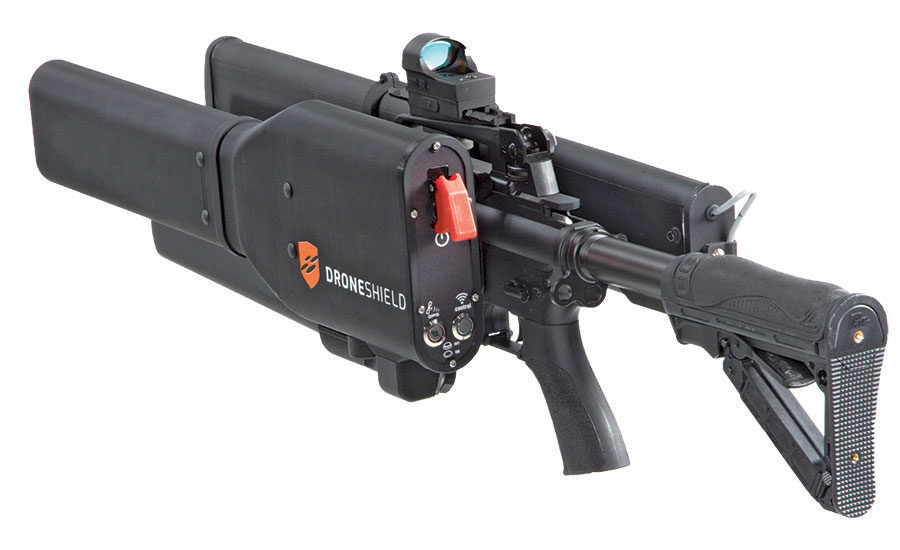Jamming Guns Emerging to Counter Hostile Drones

DroneShield’s new gun can jam GPS and multiple frequencies at once, forcing threatening drones more than a mile away to make a controlled landing or return to their operator, revealing their location.
PHOTO DRONESHIELD

Battelle’s DroneDefender has a relatively short range but has market share among military and security interests.
PHOTO BATTELLE


An Australian-based company that sells acoustic arrays to detect approaching drones now adds an offensive weapon to block drone snooping and attacks. The DroneGun emits a concentrated, targeted jamming signal to disrupt communication between pilot and drone, forcing the aircraft into an emergency landing. The gun has a range of 1.24 miles and joins a growing list of drone-defense systems.
The gun comes from Sydney-based DroneShield, whose first product was a surveillance system that detects drones up to 0.6 miles away. Oleg Vornik, DroneShield’s CFO, says sensitive microphones identify drones by listening for the distinctive sound of their wings or blades cutting through the air. The acoustic signature of every new drone on the market is added to its sound library, Vornik adds.
Now, DroneGun offers a counter-measure to drones. When fired, two of the gun’s three directional antennas blast a powerful signal on the 2.4- and 5.8-GHz frequencies, drowning the signal from the pilot’s remote control. The drone goes into autopilot and lands, says Vornik.
As an option—depending on the user’s home country and security clearance—DroneGun’s third antenna can jam a drone’s GPS, as well. Without GPS, the drone is forced to return to its pilot, revealing the operator’s location. The backpack-battery-powered gun can operate for two hours when fully charged.
Customers are close-mouthed, but Vornik says the surveillance array was used by the Boston Police Dept. during the 2016 marathon. Other customers include militaries that are keen to protect troops from drones in combat.
DroneShield sold at least one gun in the first week of its late November release, but Vornik says that, “given the nature of the company and its products, we cannot disclose [the buyer’s] name. Vornik also declines to disclose the price but says “it’s tens of thousands of dollars.” The company’s acoustic surveillance system is sold by subscription for $6,000 per sensor per year. It takes 12 sensors to cover a 0.6-mile radius.
Although DroneShield offers both a perimeter defense and offensive system, it is not alone in developing anti-drone guns. Battelle offers a gun called DroneDefender, which has a range of 1,200 ft. A Battelle spokeswoman said, “We can only say that our customers for the 100-plus units we’ve sold are with the [Dept. of Defense and the Dept. of Homeland Security] and some foreign military. We are not privy to exactly how they use them. Also, these units are not available for public sale—only to federally authorized people with the proper permits.”
HiGH + MiGHTY Technologies, a Taiwanese firm, offers two GPS-blocking models of a drone rifle called Skynet. Kason Shih, founder and CEO, says the gun uses technology similar to DroneGun’s , adding, “Our price is also tens of thousands … we prefer not to disclose our dealer price.”
A destructive, $1,000 gun being tested by the U.S. Army is the Burke Pulser. It mounts on an M4 rifle. When a blank round is fired, pressure hits piezelectric material, which converts the force into an electromagnetic pulse. It destroys a drone’s electronics, said inventor James E. Burke, an electronics engineer at the Army’s Armament Research, Development and Engineering Center, in an interview in Defense One magazine.
Least expensive is a $150 gun, developed at West Point and driven by a Raspberry Pi minicomputer. It signals the drone to power down in midair, making it crash. But it works only on Parrot drones.




